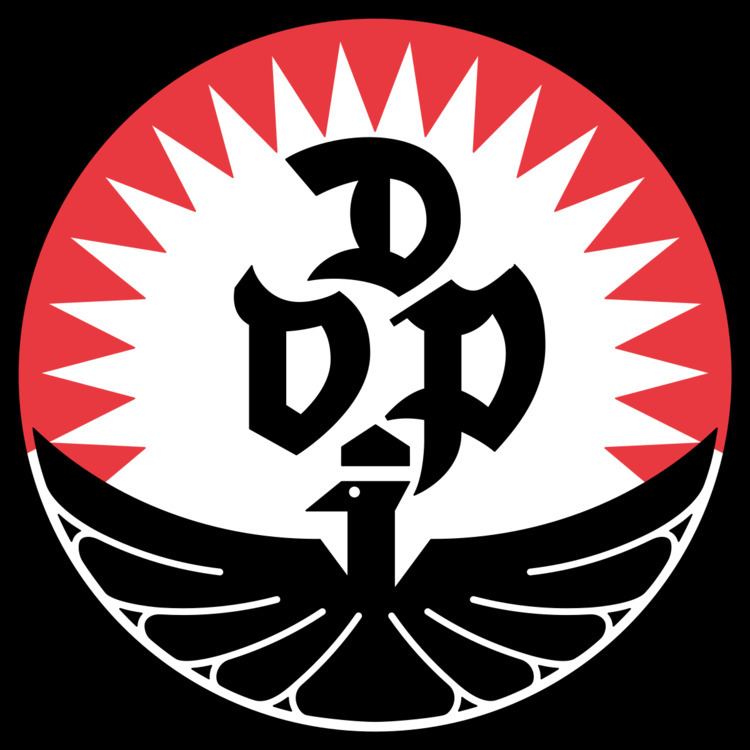Headquarters Berlin | Membership (1920) 800,000 | |
 | ||
Founded 15 December 1918 (1918-12-15) Dissolved 4 July 1933 (1933-07-04) | ||
The German People's Party (German: Deutsche Volkspartei, or DVP) was a national liberal party in Weimar Germany and a successor to the National Liberal Party of the German Empire. A right-wing liberal or conservative-liberal party, its most famous member was Chancellor and Foreign Minister Gustav Stresemann, a 1926 Nobel Peace Prize laureate.
Contents
Ideology
It was essentially the main body of the old National Liberal Party (mostly its centre and right factions) combined with some of the more moderate elements of the Free Conservative Party and the Economic Union, and was formed in the early days of the Weimar Republic by Stresemann. During the Weimar Republic, it was one of two large liberal parties in Germany, the other being the left-liberal German Democratic Party.
The party was generally thought to represent the interests of the great German industrialists. Its platform stressed Christian family values, secular education, lower tariffs, opposition to welfare spending and agrarian subsides and hostility to "Marxism" (that is, the Communists, and also the Social Democrats). Due to its lukewarm acceptance of democracy, the party was initially part of the "national opposition" to the Weimar Coalition. However, Stresemann gradually led it into cooperation with the parties of the center and left.
The party wielded an influence on German politics beyond its numbers, as Stresemann was the Weimar Republic's only statesman of international standing. He served as foreign minister continuously from 1923 until his death in 1929 in nine governments (one of which he briefly headed in 1923) ranging from the center-right to the center-left.
Despite Stresemann's international standing, he was never really trusted by his own party, large elements of which never really accepted the republic. After Stresemann's death, the DVP veered sharply to the right.
History
The party's dispute with the Social Democrats in 1930 over unemployment benefits toppled the Grand Coalition government of Hermann Müller. In the election of September 1930, the DVP was one of the biggest losers, losing 15 of its 45 parliamentary seats. The party's rightward turn accelerated soon afterward, and many of its more liberal members resigned. It began angling for a coalition of all "national" parties--including the Nazis.
The party saw further losses in the July 1932 election, falling to only seven seats. In a desperate bid to save the party, chairman Eduard Dingeldey entered a pact with Germany's largest conservative party, the German National People's Party, and put forward a joint list in the November 1932 election. It only netted four more seats, and nearly all of its remaining liberals resigned. The DVP broke the pact soon afterward, but this was not nearly enough to stave off collapse in the March 1933 election, in which it was reduced to only two seats.
After the passage of the Enabling Act of 1933, the party was subjected to increased harassment. In particular, civil servants resigned in droves out of fear for their jobs. Dingeldey fended off calls to merge with the Nazis only with difficulty. However, the harassment against the party grew to the point that Dingeldey was forced to dissolve the party on July 4 out of fear for its remaining members' safety.
Former elements of the DVP were involved in the creation of the Free Democratic Party after the Second World War.
